Exploring Graphic Design Styles: From Classic to Cutting-Edge
Welcome to our design haven, where we're about to embark on an exciting journey through the captivating world of graphic design styles. Whether you're a seasoned designer looking for fresh inspiration or a curious soul eager to learn, this blog post is tailored just for you.
Graphic design has come a long way since its inception, evolving from its classic roots to pushing the boundaries of what's cutting-edge and avant-garde. It's fascinating to witness how design styles have adapted to the changing times and cultural shifts, shaping the visual landscape of our world.
Before diving deep into this artistic adventure, let's set the stage with some eye-opening statistics highlighting the significance of graphic design in today's fast-paced digital age. According to a recent Design Management Institute (DMI) survey, businesses that invest in exceptional design experiences outperform their competitors by a staggering 211% on the Design Value Index. That's right; it's not just about aesthetics; design has a tangible impact on the bottom line!
As we explore various graphic design styles, we'll learn how each has left an indelible mark on history, shaping iconic brands, stirring emotions, and influencing how we perceive the world. From the classic elegance of Art Deco to the sleek minimalism of the Bauhaus movement and from the bold dynamism of Pop Art to the immersive digital wonders of today's VR-inspired designs, we'll cover it all!
So, buckle up and get ready to be enthralled by the evolution of graphic design and how it continues to revolutionise how we communicate, share stories, and forge connections in this interconnected world. Whether you're a fan of timeless aesthetics or crave the thrill of cutting-edge innovation, something is awe-inspiring for everyone on this design odyssey.
Are you ready to immerse yourself in the captivating world of graphic design styles? Let's go!
Table of Contents
Understanding Graphic Design Styles
Before we dive into the captivating world of graphic design styles, let's take a moment to understand what a style means in the context of design. A graphic design style is a cohesive visual language designers adopt to convey their message or evoke specific emotions. It's like a unique fingerprint that distinguishes one designer's work from another.
These styles often emerge from various artistic movements, cultural influences, technological advancements, and the designers' artistic visions. They are the visual expressions of the times they were created, reflecting their era's cultural, social, and technical aspects.
Classic Design Styles
Let's explore the classics that have left an indelible mark on the design world.
Art Deco: A Timeless Elegance

Step into the enchanting era of the roaring 1920s, a time synonymous with prosperity, cultural exuberance, and an insatiable thirst for life's pleasures. Among the defining elements of this vibrant epoch, one style stands out in its captivating allure: Art Deco. This iconic design movement captures the era's essence with its fusion of modernism, luxury, and exuberance.
Art Deco, the epitome of elegance and extravagance, swept through the world like a tidal wave of creativity. The style's hallmark is its distinctive use of geometric shapes, bold colours, and lavish ornamentation, resulting in an abundant visual feast that seduced the senses. This captivating design language reverberated through every facet of life, becoming an intrinsic part of the Jazz Age zeitgeist.
From the bustling metropolis of New York City to the chic boulevards of Paris, Art Deco's influence transcended borders and found its way into various disciplines, leaving an indelible mark on the artistic landscape. Graphic design, in particular, embraced the boldness and dynamism of Art Deco, giving rise to stunning posters, advertisements, and typography that oozed sophistication and flair.
Yet, perhaps nowhere is the grandeur of Art Deco more pronounced than in architecture. The iconic Chrysler Building in New York City is a testament to the movement's enduring legacy. With its soaring lines that seem to reach for the heavens and its metallic sheen glinting in the sun, the Chrysler Building remains a towering masterpiece, capturing the very soul of Art Deco.
The architects responsible for this majestic creation, William Van Alen and H. Craig Severance spared no expense in adorning the building with Art Deco motifs. From the majestic eagles gracing the corners of the structure to the dazzling metalwork on its facade, every inch exudes the spirit of the age. The crowning glory of the building is its gleaming stainless-steel spire, a beacon of modernity and ambition that firmly established the Chrysler Building as an architectural marvel.

Beyond architecture, Art Deco's allure extended to fashion, where designers embraced its boldness and luxury. Flappers adorned themselves in decadent beaded dresses inspired by the geometric motifs of the movement. Art Deco fashion's glitzy and glamorous nature represented a break from the rigid conventions of the past, reflecting the newfound spirit of liberation and empowerment that defined the era.
The enchanting allure of Art Deco also found its way into interior design. Lavish furnishings, sumptuous materials, and bold patterns adorned homes and establishments. Rich colour palettes, intricate patterns, and luxurious materials such as chrome, marble, and exotic woods transformed spaces into opulent sanctuaries that exuded timeless elegance.
As the 1920s gave way to the Great Depression of the 1930s, Art Deco gradually waned in popularity, but its legacy endured, leaving an indelible imprint on the design world. Resurging periodically over the decades, the style inspires modern-day designers, artists, and architects, paying homage to an era that embraced boldness, innovation, and a celebration of the human spirit.
Bauhaus: Form Follows Function

The Bauhaus movement, which emerged in Germany during the early 20th century, was a pivotal revolution that transformed the very essence of design thinking. Breaking away from the lavish and ornate styles of the past, the Bauhaus ideology brought about a profound shift by accentuating the essential unity of art, craft, and technology. This fusion of disciplines encouraged a holistic approach to design, where aesthetics and functionality coalesced seamlessly.
At its core, the Bauhaus philosophy celebrated simplicity and clarity. It sought to eliminate the unnecessary complexities and flourishes that had characterised design throughout history. Instead, it embraced clean lines, geometric shapes, and an emphasis on form following function. The famous phrase “less is more,” attributed to architect Ludwig Mies van der Rohe, encapsulated this ethos, emphasising that restraint and elegance could be more impactful than excessive embellishment.
One of the key aspects that set the Bauhaus movement apart was its emphasis on integrating art and technology. This concept laid the groundwork for the modern field of industrial design, wherein functional objects were infused with artistic sensibilities. The Bauhaus workshops and educational programs encouraged artists and designers to collaborate with engineers and artisans, nurturing a symbiotic relationship that resulted in innovative and practical creations.
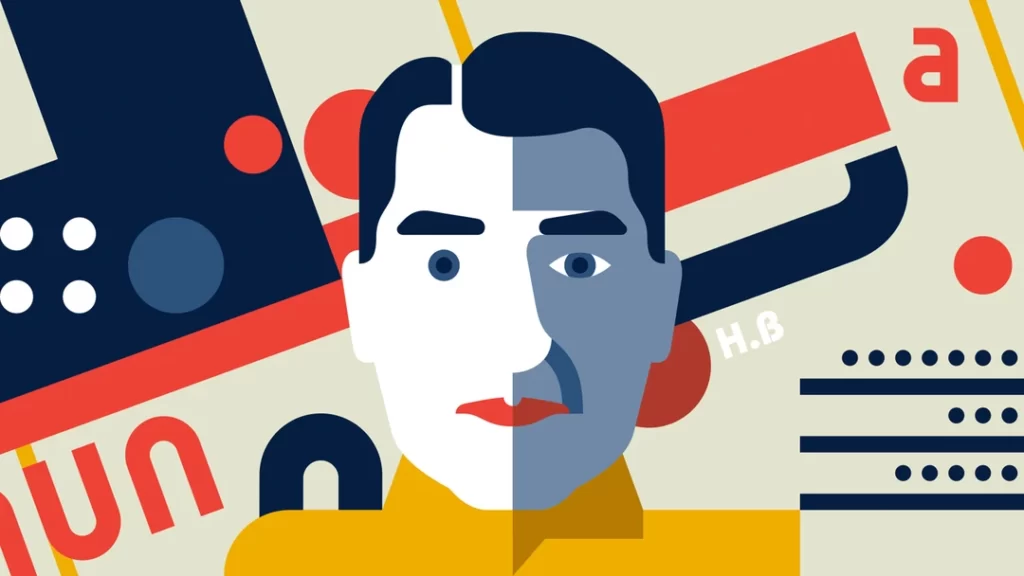
Graphic design, in particular, experienced a significant transformation due to the influence of the Bauhaus movement. Visual communication shifted from being purely decorative to serving a functional purpose. Designers began prioritising legibility, clarity, and directness in their works, abandoning the extravagant typography and intricate illustrations that had been prevalent before. This new approach recognised that effective design should communicate information efficiently and intuitively, enhancing the user experience and reinforcing the message.
The legacy of the Bauhaus movement continues to reverberate through modern design practices. Its impact on architecture, interior design, product design, and graphic design can still be observed today. Many contemporary designers draw inspiration from the principles of simplicity, functionality, and unity that the Bauhaus pioneers championed.
Moreover, the Bauhaus movement also fostered an international network of artists, designers, and educators who carried its ideals across borders and oceans. As a result, the Bauhaus ethos spread globally, influencing design schools and creative disciplines worldwide. Its emphasis on the harmony of art and technology laid the groundwork for the digital age, where the blending of artistic expression and technological innovation has become more seamless.
Modern and Postmodern Styles
As the world evolved, so did graphic design. Let's explore the modern and postmodern styles that have left a lasting impression.
Swiss Style: Minimalism and Precision

Originating in Switzerland during the 1950s, the Swiss Style, alternatively known as the International Typographic Style, emerged as a revolutionary movement in graphic design. Characterised by its strong emphasis on minimalism and precision, this artistic approach transformed how we perceive visual communication.
The Swiss Style's heart lies in the fundamental principle of clear and effective communication through typography. Designers of this movement meticulously crafted their creations, recognising that typography not only conveyed the message but also contributed to the overall visual harmony of the piece. By employing clean, sans-serif typefaces and prioritising readability, Swiss Style designers eliminated unnecessary distractions, allowing the message to take centre stage.
Another critical feature of the Swiss Style was its reliance on a grid-based layout. A well-structured grid serves as the backbone of any design, providing an organised framework to arrange elements with mathematical precision. This systematic approach added coherence and consistency to the visual composition and facilitated a sense of order and readability. The grid was skillfully utilised to achieve balance, alignment, and hierarchy, guiding the viewer's eye seamlessly through the design.

The Swiss Style's impact extended far beyond its country of origin, gaining international recognition and becoming synonymous with modernist graphic design. Its influence was felt across various design disciplines, from posters, advertisements, and corporate identities to book covers and editorial layouts. This approach's universal appeal lies in its ability to transcend cultural boundaries and deliver an unambiguous message, making it a staple in the design world for decades.
Despite the time, the Swiss Style's legacy endures, and its principles remain inspiring for countless designers, even in contemporary times. Its timelessness lies in its commitment to functionality and clarity, eschewing passing design fads and favouring enduring principles. Designers today continue to draw from the Swiss Style's rich history, adapting and combining its principles with modern aesthetics to create visually compelling and impactful works.
Furthermore, the digital age has given the Swiss Style a new playground for exploration. With the advent of technology and the internet, designers have adapted the Swiss Style's principles to create responsive websites, user interfaces, and digital experiences that emphasise clarity and ease of navigation.
Psychedelic Art: A Trip into Colorful Chaos
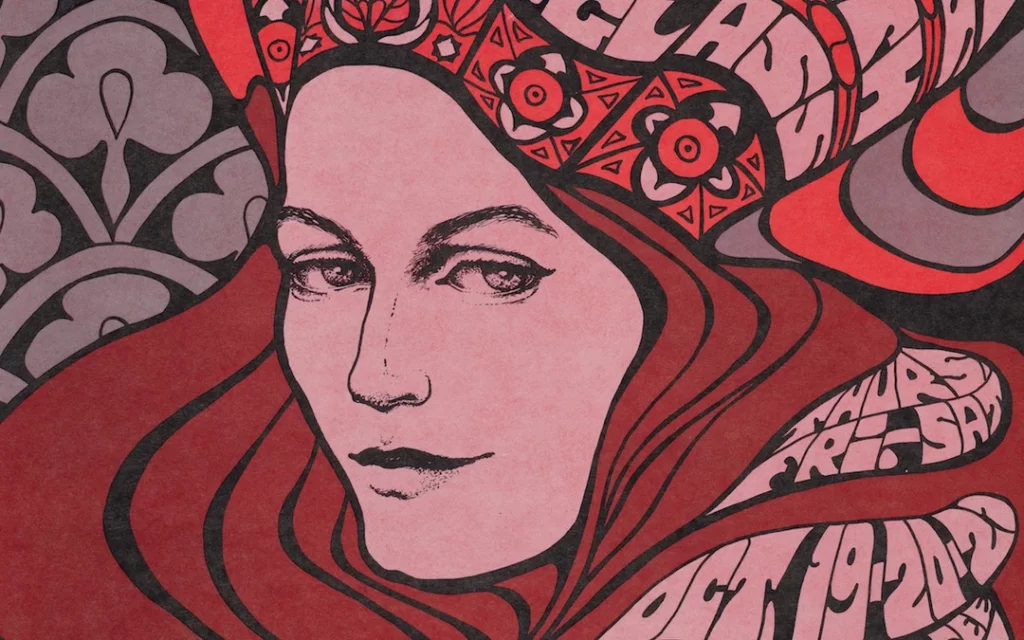
The 1960s was a transformative and exhilarating era that witnessed a wave of rebellion against societal norms, an outpouring of self-expression, and an emotional thirst for exploration in all aspects of life. Amidst this cultural revolution, a captivating form of artistic expression called psychedelic art emerged as a powerful reflection of the counterculture movement.
Psychedelic art was heavily influenced by the widespread use of mind-altering substances such as LSD and other hallucinogens, which played a significant role in shaping the perspectives of the young generation during that period. This newfound fascination with altered states of consciousness catalysed for artists to venture into uncharted territories of creativity, pushing the boundaries of their imagination and transcending traditional artistic norms.
At its core, psychedelic art is a mind-bending and kaleidoscopic style that seeks to stimulate the senses and provoke introspection. One of the defining features of this art form is its mesmerising use of vibrant and contrasting colours that seem to dance and vibrate on the canvas, pulling the viewer into a hypnotic trance. These bold hues reflected the artists' desire to break free from the monotony of conventional art and challenge the prevailing norms of the time.
Intricate and elaborate patterns, often resembling complex fractals or mandalas, are another hallmark of psychedelic art. These hypnotic motifs were intricately woven, creating a mesmerising visual experience that transports the viewer into a realm of endless complexity and cosmic interconnectedness.

Distorted typography was also a prominent feature in psychedelic art, with lettering that seemed to undulate and morph, mirroring psychedelic substances' surreal and dreamlike experiences. Words became a means of communication and a visual representation of the artist's altered state of mind, where reality and perception merged into a harmonious whole.
While the heyday of psychedelic art may have waned as the counterculture movement subsided, its influence still reverberates in contemporary design. Elements of this unique art form can be found in various creative fields, including graphic design, advertising, and even fashion. Designers today often draw inspiration from the bold and eye-catching visuals that psychedelic art introduced to the world. It is a timeless reminder that pushing the boundaries of creativity and challenging the status quo can lead to extraordinary and groundbreaking results.
Postmodernism: Embracing Eclecticism
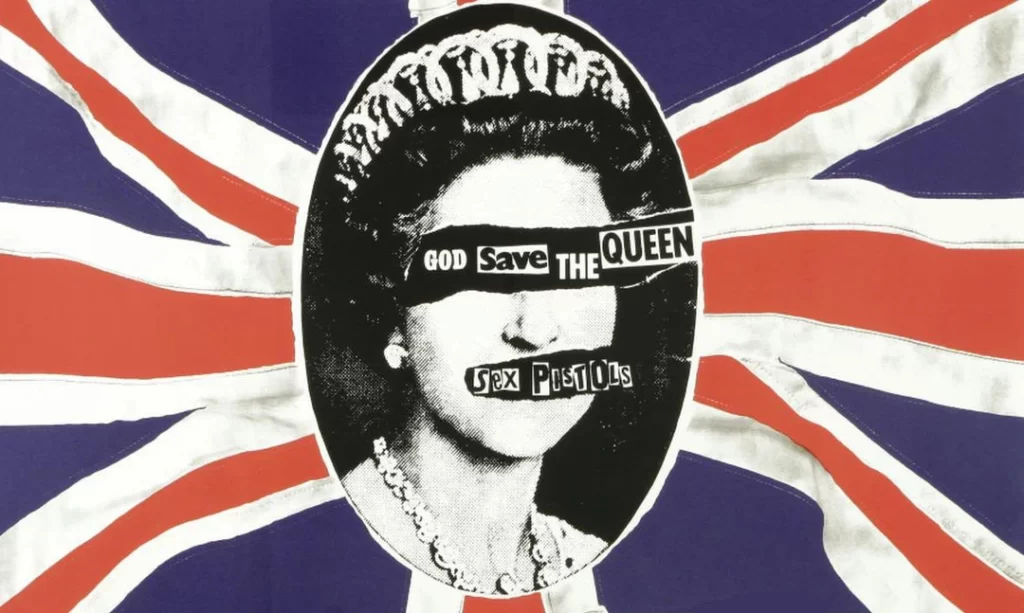
Postmodernism, a movement that emerged in the late 20th century, revolutionised the design world by fundamentally challenging the principles of modernism. At its core, postmodernism questioned the idea of a single, universal truth and instead celebrated the coexistence of multiple perspectives and truths. This philosophical shift profoundly impacted graphic design, where it manifested through a bold departure from the rigid constraints of modernist principles, encouraging designers to embrace a more diverse, inclusive, and eclectic approach.
Postmodernism shattered the traditional notion of adhering to a specific style or following strict rules in graphic design. Designers were now free to experiment, innovatively combining various visual languages, textures, and cultural references. This newfound freedom enabled the creation of visually rich and complex compositions that reflected the dynamic nature of contemporary society.
Postmodern graphic design became a melting pot of influences, blending elements from different eras, cultures, and artistic movements. It emphasised juxtaposition and contradiction, giving birth to unique and unexpected design solutions. The resulting works often contained playful and ironic elements, challenging the viewer's perception and inviting them to explore the layers of meaning beneath the surface.

In this era, designers wholeheartedly embraced the concept of “high” and “low” culture, integrating elements from popular culture, mass media, and subcultures into their work. Iconic imagery, advertising, and everyday objects were recontextualised, transforming mundane aspects into thought-provoking design elements.
One of the hallmarks of postmodern graphic design was the use of pastiche, which involved borrowing and remixing elements from various sources to create something entirely new. This technique celebrated the diversity of visual language and made the design process a playful and self-aware endeavour.
Moreover, postmodernism also challenged the notion of a singular, authoritative perspective in design. Instead, it encouraged collaboration and collective creativity. Designers began to work together, drawing inspiration from one another and fostering a sense of community that transcended individual egos.
Postmodern graphic design's impact extended beyond the boundaries of traditional print media. As technology advanced, it permeated the digital realm, leading to dynamic and interactive design experiences that further broke away from static conventions. This era began an exciting fusion of design and technology, paving the way for today's multimedia-rich landscape.
While postmodernism brought a refreshing wave of creativity and openness to the design world, it also sparked debates and criticism. Some argued that the movement's tendency to juxtapose elements without a straightforward underlying narrative or purpose led to a loss of coherence and depth in design. Nevertheless, it cannot be denied that postmodernism injected a much-needed dose of excitement and diversity into graphic design, revolutionising how designers approach their craft.
Contemporary and Cutting-Edge Styles
Now, let's fast forward to the present and explore the contemporary and cutting-edge styles shaping design today.
Flat Design: Embracing Simplicity
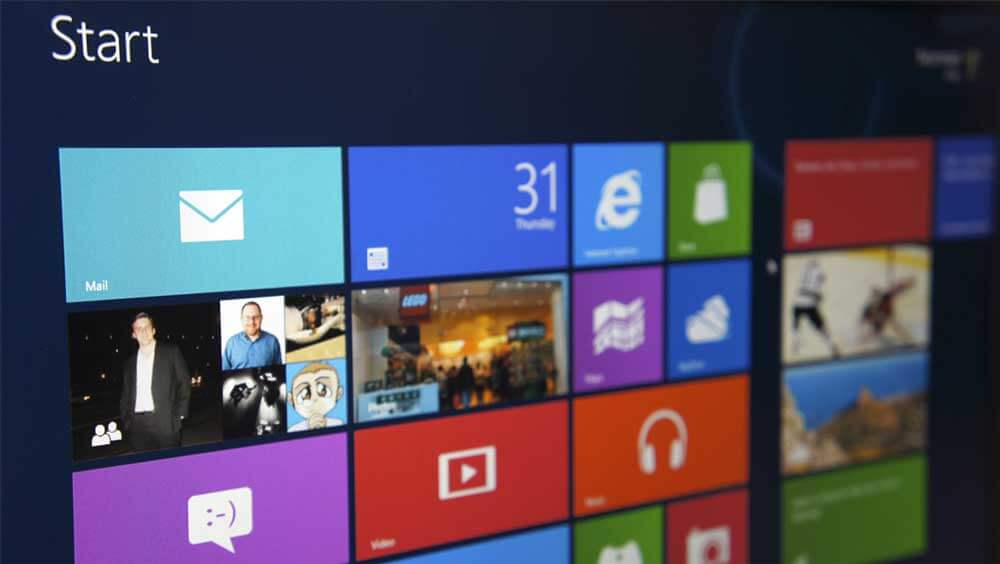
During the early 21st century, a significant shift occurred in the digital design world, giving rise to the emergence of flat design. This design movement directly responded to the prevailing skeuomorphic design trends that had dominated user interfaces for years. The skeuomorphic technique incorporates realistic textures, shadows, and gradients to mimic real-world objects, often to provide familiarity to users. However, as technology evolved and user expectations changed, a need for a more streamlined and user-friendly approach to design became apparent.
Flat design, characterised by its emphasis on simplicity, clarity, and minimalism, presented a refreshing departure from the visual complexities of skeuomorphic design. Central to the flat design philosophy were clean lines, bold and vibrant colours, and a deliberate absence of ornate textures or artificial visual elements. The designers aimed to create intuitive user experiences focusing on functionality and content rather than decorative elements.
One of the primary objectives of flat design was to achieve a harmonious balance between aesthetics and usability. By eliminating unnecessary embellishments and adopting a cleaner visual language, designers sought to reduce cognitive load for users and enhance overall usability. This approach was particularly appealing for the growing prevalence of mobile devices with varying screen sizes, as the flat design's scalable and adaptive nature allowed for seamless user experiences across multiple platforms.
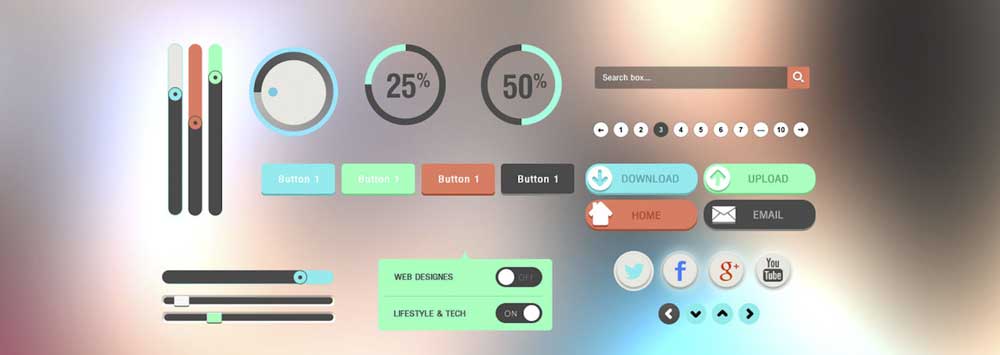
As flat design gained traction, industry giants like Apple and Google embraced this design language, incorporating it into their products and services. Apple's iOS 7, released in 2013, marked a notable turning point with its flat design overhaul. Google followed suit with its Material Design language, which also embraced the principles of flat design while adding subtle depth through its “material” metaphor.
The widespread adoption of flat design across prominent tech companies and digital platforms played a pivotal role in solidifying its position as the dominant design trend of the era. Its influence extended beyond mobile operating systems, impacting web design, app interfaces, software applications, and branding.
One of the critical advantages of flat design was its adaptability to various screen sizes and resolutions. As responsive design became essential for catering to diverse devices, flat design's flexible nature proved invaluable in ensuring consistent and cohesive user experiences across different platforms.
Moreover, the minimalist aesthetics of flat design allowed for faster loading times, contributing to enhanced performance and user satisfaction by focusing on essential elements and eliminating visual clutter, flat design aligned with the growing emphasis on speed and efficiency in the digital realm.
However, while flat design brought many benefits, it also presented some challenges. With the absence of visual cues like shadows and gradients, it became crucial for designers to rely on other means of guiding user interactions. Intuitive iconography, straightforward typography, and deliberate colour choices became paramount in conveying information effectively without relying on skeuomorphic affordances.
Over time, the concept of flat design has continued to evolve. Designers introduced subtle modifications like “semi-flat” or “material flat,” integrating gentle shadows and slight gradients to add depth without abandoning the core principles of simplicity and minimalism. This evolution demonstrated how design trends often undergo iterative changes to address emerging needs and preferences while preserving their fundamental principles.
Material Design: A Tangible Digital Experience

In 2014, Google made a significant leap in digital design by introducing Material Design. This groundbreaking approach took the principles of flat design, which had been popular then. It elevated them to a whole new level by infusing a sense of tactile realism into digital interfaces. The result was an innovative design language that revolutionised how users interacted with software and applications, seamlessly blending the physical and digital worlds.
The driving force behind Material Design was to emulate the familiarity and intuitiveness of the physical world in the digital space. Google's designers drew inspiration from everyday objects, surfaces, and materials to create a cohesive visual language that users could quickly grasp and navigate. By incorporating the concept of “material,” representing a symbolic foundation for everything on the interface, they aimed to establish a consistent and cohesive experience across different platforms and devices.
One of the core aspects of Material Design is the use of subtle shadows, depth, and motion to provide a natural and interactive feel to the interface elements. Elements are layered with realistic drop shadows, giving a sense of depth and elevation, making them appear as if they are floating above the background. This visual cue helps users understand the hierarchy and relationships between elements, guiding them through the app or website effortlessly.
Motion plays a vital role in Material Design, as well. Interactive elements respond to user input with smooth and fluid animations, making the experience more dynamic and engaging. These animations serve an aesthetic and functional purpose, providing visual feedback and acknowledgement of user actions, enhancing usability and comprehension.

Beyond its aesthetic appeal, Material Design has quickly become a standard for Android apps and websites due to its practical advantages. The consistent and coherent design language it provides ensures a seamless user experience across various devices and screen sizes, promoting brand recognition and usability. Developers and designers also benefit from the comprehensive guidelines and resources offered by Google, enabling them to create visually pleasing and user-friendly interfaces more efficiently.
Material Design's success lies in its ability to balance aesthetics and functionality. By incorporating real-world characteristics into the digital realm, users feel a connection and comfort that fosters engagement and encourages exploration. Whether tapping, swiping, or scrolling, interactions with Material Design interfaces feel intuitive and intuitive, making the user experience a joy.
Over the years, Material Design has continued to evolve and adapt to technological advancements and changing design trends. It has inspired numerous other design systems and has even made its way into non-Google products and platforms, further solidifying its position as a significant design philosophy in the digital world.
Experimental Typography: Pushing the Boundaries
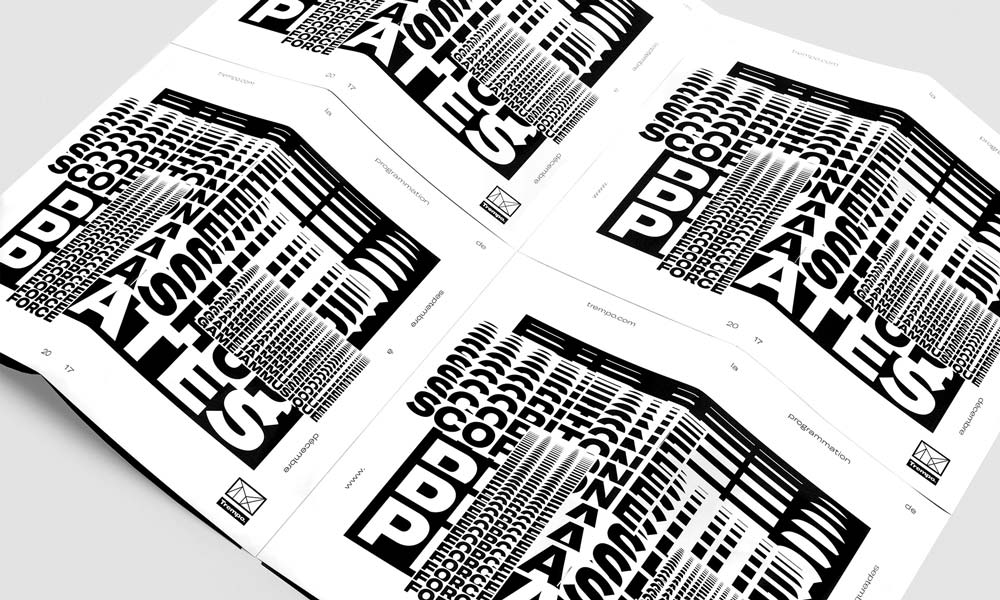
As the rapid advancement of technology reshapes the creative landscape, the realm of design experiences an exhilarating era of limitless possibilities. Experimental typography stands at the forefront of this transformative movement. This captivating and boundary-pushing style harnesses the power of technology and innovative techniques to metamorphose letterforms into expressive and interactive visual masterpieces. This avant-garde approach is a playground for designers, providing an extraordinary canvas to explore kinetic typography, variable fonts, and generative algorithms, thus redefining the very essence of typography.
At the heart of experimental typography lies a fusion of artistry and technology, which encourages designers from the conventional constraints of static lettering. Kinetic typography, for instance, breathes life into words and sentences, infusing them with motion and rhythm. As letters dance, twist, and contort, they transform into dynamic entities, amplifying the intended message and resonating with viewers profoundly. Kinetic typography excels in various creative fields, from video production and advertising to user interface design, leaving a lasting impact on audiences and elevating the storytelling experience.
Moreover, variable fonts have revolutionised typographic design, enabling fluidity and adaptability. These fonts embrace the concept of multi-axis variability, granting designers the power to manipulate a typeface's weight, width, slant, and other attributes seamlessly. This newfound flexibility ensures that typography adapts to diverse contexts and screen sizes, enhancing legibility and aesthetics across different devices and platforms. The dynamic nature of variable fonts breathes versatility into typography, empowering designers to convey emotions and meaning with enhanced precision and impact.
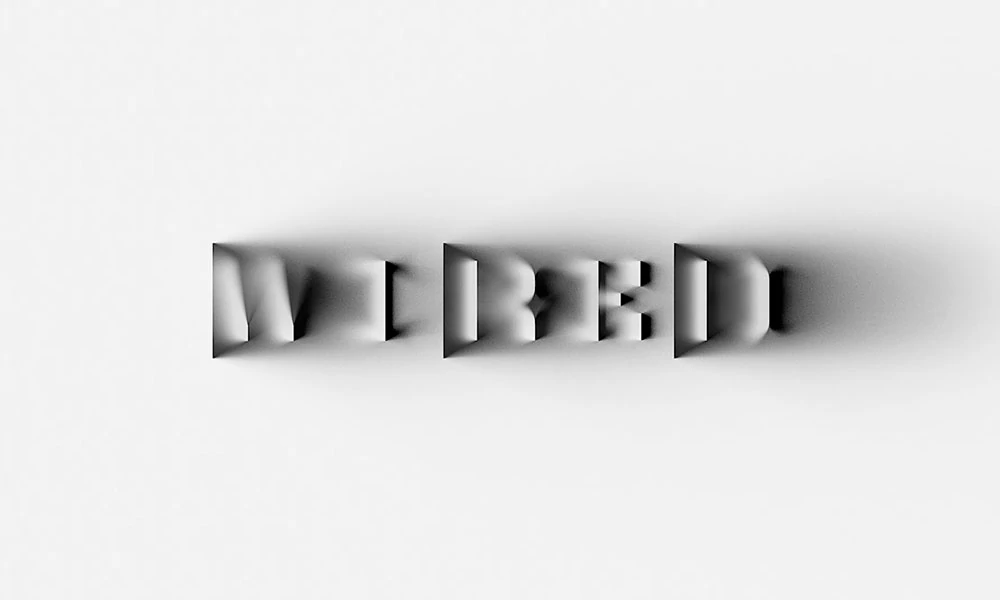
Equally awe-inspiring is the implementation of generative algorithms, representing an intersection between art and artificial intelligence. Designers unveil endless permutations and unexplored possibilities by programming algorithms to generate letterforms based on specific rules or data inputs. These generative systems birth unique typographic compositions that defy traditional expectations, often resulting in striking visuals that push the boundaries of creativity. The dynamic interplay between human creativity and computational intelligence brings forth an unprecedented harmony in design, where innovation and ingenuity coalesce.
As experimental typography challenges the status quo, it sparks fresh conversations and pushes the limits of what typography can achieve. By blending technology and design expertise, creators forge connections between the digital and physical realms, generating captivating and interactive experiences that profoundly captivate audiences. This transformative approach encourages viewers to engage with typography in new ways, fostering a deeper appreciation for the artistry behind even the most straightforward letters.
The Impact of Graphic Design Styles
Beyond their visual appeal, graphic design styles significantly affect branding, culture, and creativity.
Shaping Brand Identities
The choice of graphic design style can significantly impact a brand's identity and perception. Classic styles like Art Deco or Bauhaus can evoke a sense of heritage and timelessness. In contrast, modern and cutting-edge techniques like Material Design or experimental typography can convey innovation and forward thinking. Understanding the nuances of each style empowers designers to create visual identities that resonate with their target audience and effectively communicate a brand's values.
Cultural and Societal Reflection
Graphic design styles often mirror the culture and society in which they emerge. Classic styles evoke the nostalgia of a particular era, while contemporary styles can mirror our fast-paced, technology-driven world. By understanding these influences, designers can create designs that speak directly to their intended audience and reflect the prevailing cultural attitudes and values.
Pushing Boundaries and Inspiring Creativity
Cutting-edge graphic design styles, such as experimental typography, continually challenge the status quo and inspire other designers to push the boundaries of their creativity. Innovation in design drives the field's evolution and leads to exciting new possibilities for visual communication. As designers experiment and break new ground, they inspire others to follow suit, contributing to a dynamic and ever-evolving design community.
Conclusion
In conclusion, graphic design styles offer us an exciting glimpse into the evolution of visual communication. From the timeless elegance of Art Deco to the futuristic experimentation of experimental typography, each style has left a profound mark on the design world. As designers, understanding the history and context of these styles empowers us to create powerful and impactful visual communication that resonates with audiences and shapes the design landscape of tomorrow. So, embrace the past, experiment with the present, and push the boundaries to define the graphic design styles of the future.
